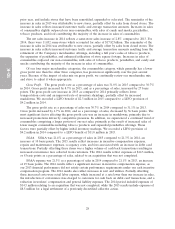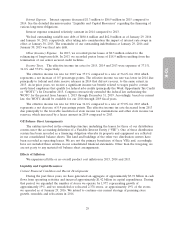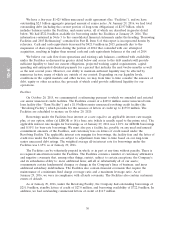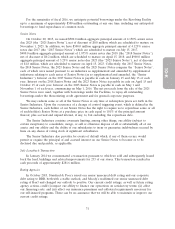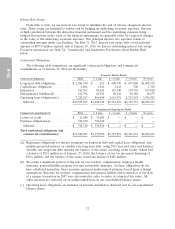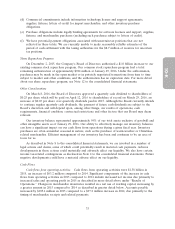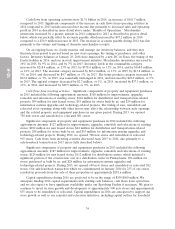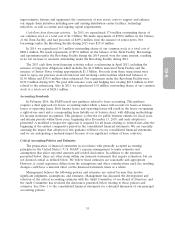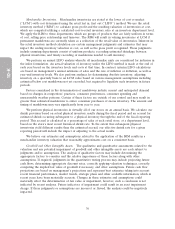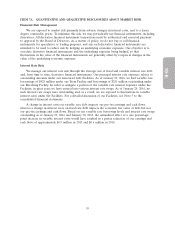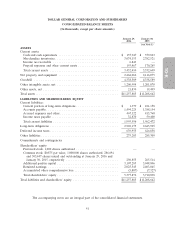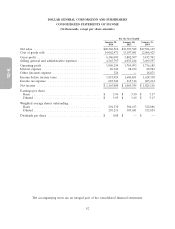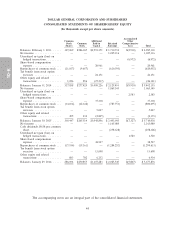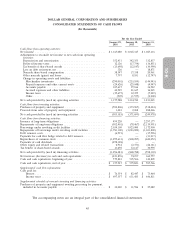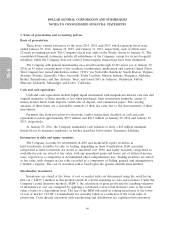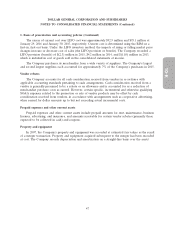Dollar General 2015 Annual Report Download - page 112
Download and view the complete annual report
Please find page 112 of the 2015 Dollar General annual report below. You can navigate through the pages in the report by either clicking on the pages listed below, or by using the keyword search tool below to find specific information within the annual report.
10-K
which includes an analysis of whether such loss estimates are probable, reasonably possible, or remote.
We re-evaluate these assessments on a quarterly basis or as new and significant information becomes
available to determine whether a liability should be established or if any existing liability should be
adjusted. The actual cost of resolving a claim or proceeding ultimately may be substantially different
than the amount of the recorded liability. In addition, because it is not permissible under U.S. GAAP
to establish a litigation liability until the loss is both probable and estimable, in some cases there may
be insufficient time to establish a liability prior to the actual incurrence of the loss (upon verdict and
judgment at trial, for example, or in the case of a quickly negotiated settlement).
Lease Accounting and Excess Facilities. Many of our stores are subject to build-to-suit
arrangements with landlords, which typically carry a primary lease term of up to 15 years with multiple
renewal options. We also have stores subject to shorter-term leases and many of these leases have
renewal options. Certain of our stores have provisions for contingent rentals based upon a percentage
of defined sales volume. We recognize contingent rental expense when the achievement of specified
sales targets is considered probable. We record minimum rental expense on a straight-line basis over
the base, non-cancelable lease term commencing on the date that we take physical possession of the
property from the landlord, which normally includes a period prior to store opening to make necessary
leasehold improvements and install store fixtures. When a lease contains a predetermined fixed
escalation of the minimum rent, we recognize the related rent expense on a straight-line basis and
record the difference between the recognized rental expense and the amounts payable under the lease
as deferred rent. Tenant allowances, to the extent received, are recorded as deferred incentive rent and
amortized as a reduction to rent expense over the term of the lease. We reflect as a liability any
difference between the calculated expense and the amounts actually paid. Improvements of leased
properties are amortized over the shorter of the life of the applicable lease term or the estimated
useful life of the asset.
Share-Based Payments. Our stock option awards are valued on an individual grant basis using the
Black-Scholes-Merton closed form option pricing model. We believe that this model fairly estimates the
value of our stock option awards. The application of this valuation model involves assumptions that are
judgmental in the valuation of stock options, which affects compensation expense related to these
options. These assumptions include the term that the options are expected to be outstanding, the
historical volatility of our stock price, applicable interest rates and the dividend yield of our stock.
Other factors involving judgments that affect the expensing of share-based payments include estimated
forfeiture rates of share-based awards. Historically, these estimates have been materially accurate;
however, if our estimates differ materially from actual experience, we may be required to record
additional expense or reductions of expense, which could be material to our future financial results.
Fair Value Measurements. Accounting standards for the measurement of fair value of assets and
liabilities establish a fair value hierarchy that distinguishes between market participant assumptions
based on market data obtained from sources independent of the reporting entity (observable inputs
that are classified within Levels 1 and 2 of the hierarchy) and the reporting entity’s own assumptions
about market participant assumptions (unobservable inputs classified within Level 3 of the hierarchy).
Therefore, Level 3 inputs are typically based on an entity’s own assumptions, as there is little, if any,
related market activity, and thus require the use of significant judgment and estimates. Currently, we
have no assets or liabilities that are valued based solely on Level 3 inputs.
Our fair value measurements are primarily associated with our outstanding debt instruments. We
use various valuation models in determining the values of these liabilities. We believe that in recent
years these methodologies have produced materially accurate valuations.
38


